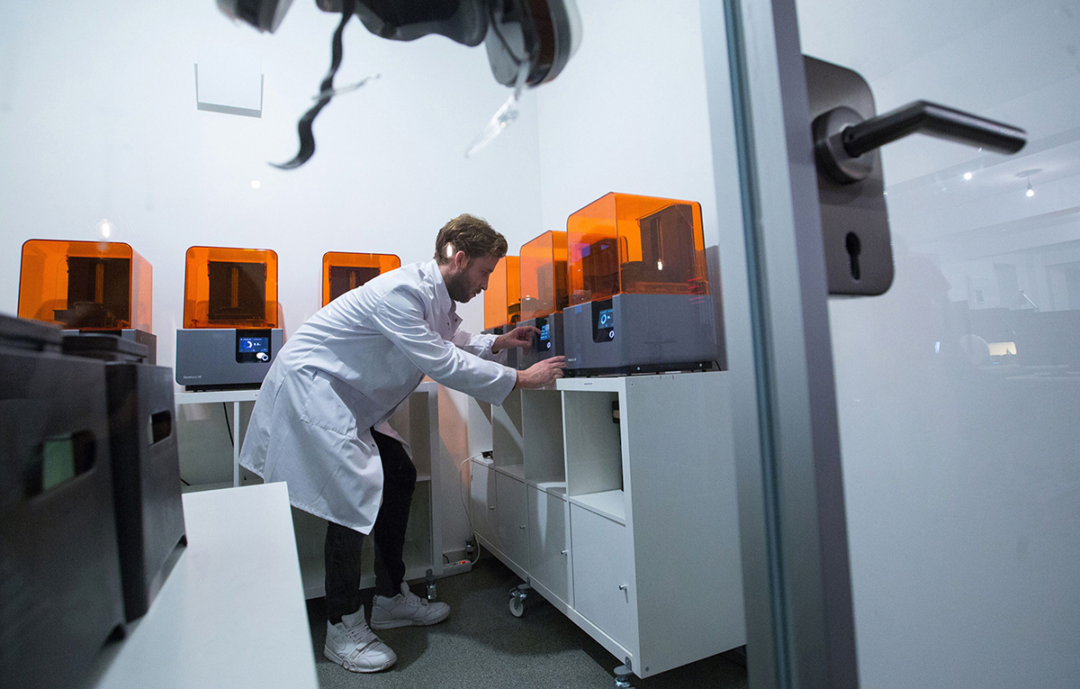
Global manufacturers need to stay ahead of the curve when it comes to product development, continuously making updates to optimize technology as needs change. A powerful tool for ensuring that degree of agility is additive manufacturing.
Also known as 3D printing, additive manufacturing is helping in the effort to reshore and diversify global production. It brings part manufacturers closer to where final product is being assembled, through the creation of small hubs that are local or even in-house.
Traditionally, additive manufacturing has been used primarily for prototyping and design, turning out a small number of parts for testing before volume production gets underway. However, a survey commissioned by Materialise found that the technology is at a tipping point. Nearly half of manufacturers surveyed reported using it for end-part production.
This advance allows manufacturers to decrease their dependence on global supply chains, by producing parts they would normally get overseas close to home. Localizing supply chains brings production closer to customers, and protects against vulnerabilities in the global supply chain.
Reduced transit time also supports companies’ environmental goals. Through shorter supply chains and localized production, manufacturers have an opportunity to reduce fossil fuel use and lower greenhouse gas emissions.
Additive manufacturing also allows for easier changes in design. Several versions of a part can be made in-house or through a local 3D printing company, to see which works best in a final product without having to update or change hardware. The best design can then be applied to locally produced end-use parts.
3D printers do not require retooling, and can make an infinite variety of products. Even in the midst of production, manufacturers can easily change parts by updating design files, generating an updated prototype or end-use part within hours.
To derive value from additive manufacturing, companies must understand the technology’s limitations, as well as how best to integrate it into their production environments. Additive manufacturing is inherently different from traditional, subtractive methods, and manufacturers looking to implement it must identify the parts and products that are best suited for it.
For established manufacturers, this often means adding to, rather than replacing, existing production capabilities. For example, a company might draw on additive manufacturing in serial production to make a couple of components for a finished product that it normally imports from overseas. Third-party experts often help manufacturers understand which existing parts and processes could be replaced by the technology.
It’s then important to conduct experiments to refine designs and processes. Once designers become familiar with the technology and switch from a subtractive to additive manufacturing mindset, companies can realize the technique’s many advantages, such as the ability to make more intricate shapes and structures, and reduce weight and material use.
Data security and integrity are essential as companies transition from a centralized production model to one of numerous production sites. Manufacturers using third-party 3D printers must ensure that their designs are encrypted to prevent counterfeits and unauthorized modifications. Some end-to-end platforms allow designers and engineers to couple designs with specific production criteria, such as the type of machine or material that can be used.
Producers that are hesitant to jump in can seek advisory services from additive manufacturing bureaus. Along with pinpointing products and processes that would benefit from the technology, they can help manufacturers integrate the technology into their existing environments, creating a seamless operation while keeping data consistent across additive and traditional operations. Open software enables different manufacturing aspects to communicate effectively in a connected, end-to-end digital workflow.
Advances in technology will play an essential role as manufacturers look to reshore and avoid costly supply chain challenges. Additive manufacturing is a major player in the journey toward smart manufacturing, and its implications will impact production environments for decades to come.
Bart Van der Schueren is chief technology officer with Materialise.







